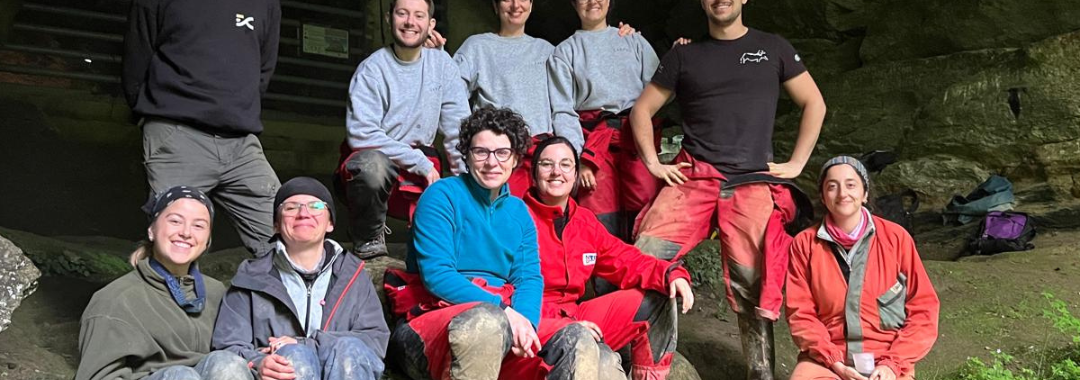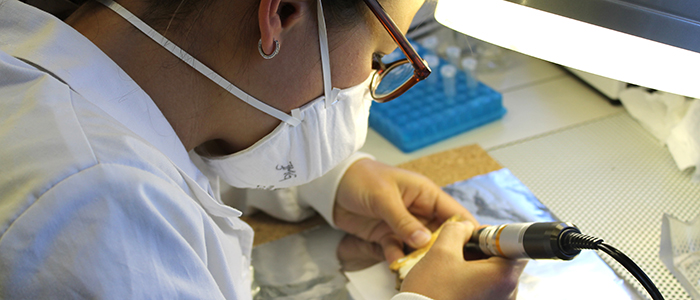The cave is located near San Sebastian sourrounding by eight caves with prehistoric art and human occupation along the Upper Palaeolotithic
After twelve days of excavation at the Aitzbitarte III cave, the EvoAdapta group from the University of Cantabria, along with the ERC SUBSILIENCE project and the Prehistoric Technology Laboratory from the University of Salamanca, successfully concluded the 3rd archaeological campaign. The cave, which belongs to a set of Paleolithic sites, is located in the municipality of Rentería-Gipuzkoa, in the Basque Country, within an area known as Landarbaso.
Aitzbitarte is a small limestone hill that houses nine caves named Aitzbitarte I to IX after the stream that flows at their base. The largest sites are III, also known as the “lower large cave,” and IV, known as the “upper large cave.” Paleolithic hunters inhabited these caves, with indications of the Lower Paleolithic and Aurignacian are found in the third cave.
Human Subsistence Refuge
The ERC SUBSILIENCE project focuses on studying human subsistence strategies through the analysis of 20 key sites located in southern European refuges, specifically in Serbia, Croatia, Italy, and Spain. One of these refuges, the easternmost part of the northen Iberian peninsula, is the Aitzbitarte III cave.
Through various analyses and combining of multidisciplinary techniques, the project aims to reconstruct paleoeconomic, paleoclimatic, and paleoecological conditions with high-precision chronology. This is helping to determine which specific subsistence patterns (if any) favored Homo sapiens over Neanderthals and to what extent climatic fluctuations affected Neanderthal extinction in each study area, ultimately proposing an explanation on a pan-European level.



